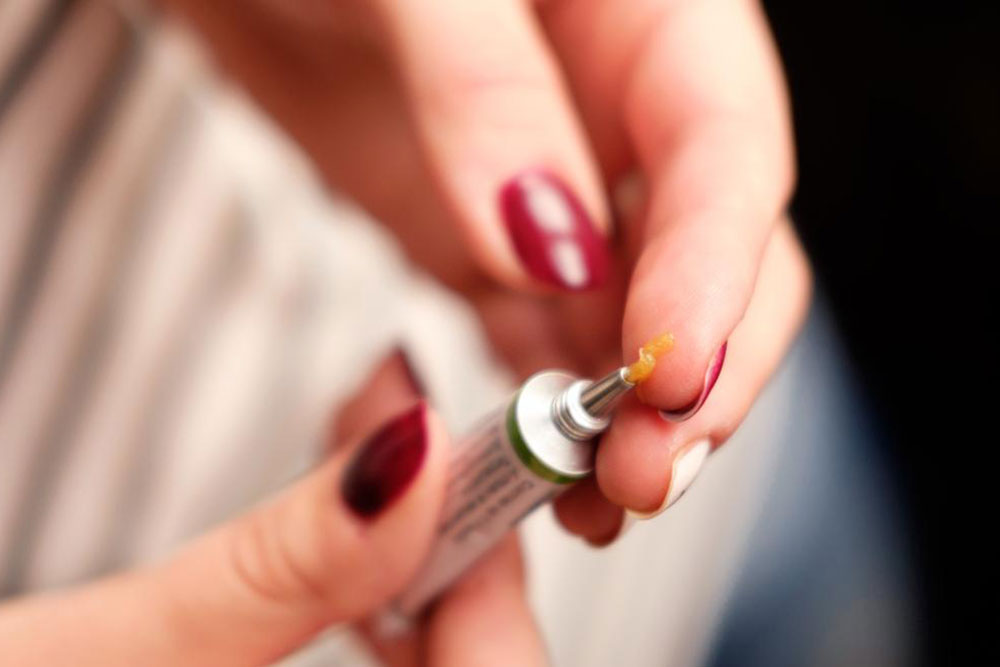Different Ways to Get Rid Of Boils
Boils, also known as abscesses, are basically red-colored bumps that develop beneath the skin. These bumps are not always painful, but as they grow larger and accumulate more pus, the tenderness and pain increase. Also, they do not drain until they are fully saturated. Boils are those kinds of skin infections that initiate at the root of the oil glands or the hair follicles of the skin. Boils can be very painful and warm when touched since they penetrate into the deeper subcutaneous layer of the skin.

In case of small insignificant boils, it can be treated at home giving warm compresses. The repeated soakings will drive the pus to the head of the boils and it bursts to release the same. Whatever might be the case; boils should never be pricked with a needle for draining the pus as this can make the infection even worse.
Due to infection, the base of the oil glands or the hair follicles and the area of the skin associated with the infection become red. The reddish appearance indicates that an inflammation has occurred. Immediately after, a soft painful coagulum develops from that place. It takes a maximum of 4 to 7 days for the clump to accumulate enough pus and turn white. for those who do not know how to get rid of boils, a hot compress is an effective home remedy. In case the pus does not drain even after applications of repeated hot compresses, it should be understood that the sepsis has metastasized to the deeper layers of the skin. In such a condition the boil is termed as furuncle or an abscess.
Causes of Boils
There are multitudes of bacteria’s present on our skin’s surface. Some are beneficial for our skin and some are bad. Boils are caused by Staphylococcus that resides on our skin. Staphylococcal infections sometimes form abscesses and form a boil. It is easy for staphylococcus to enter into the inner layers of skin through minor cuts and breaks. The bacteria travel down to the roots of the hair follicles on the skin and get in to form infection. Insect and mosquito bites on sensitive skin, small cuts, nicks, scrapes, breaks, ingrown hair, wrong shaving techniques, and serious skin conditions might also result in boils. Few exceptional cases include, acne inversa is also known as hiradenitis suppurativa. Here, the skin under the armpits, buttocks, groin etc. may contain lumps imitating pimples; they are entirely different from boils. In folliculitis where hair follicles are inflamed due to wrong shaving procedure, the skin might burst into boils. These are mostly found in the sensitive pubic zone after a wrong shave.
Symptoms of Boils
Usually, it is bright red and swollen in appearance as well as painful. Redness depends upon the maturation of the boil and s ize is usually less than an inch. A large, swollen, red and active boil is contagious. Since the bacteria inside them is in an active state, and gradually acquiring more pus. Not indulging in intimate contact with a person who has developed staph sepsis can be an effective step on how to avoid getting boils. The lump grows every day, softly yet steadily, and the pain increases. Boils are communicable until the pus inside them have drained completely, or until the same has healed or have dried. The skin encircling the boil might nourish more such to popup. Lymph nodes around the boil are usually swollen; moreover, f ever is often associated with a boil. A boil can pass on to people if skin to skin contact is made or even by sharing things. In order to prevent infection from propagating it must be kept covered.
Possible Hazards of Boils
It is of the common belief that certain illnesses make individuals more prone to skin infections like boils.
- Poor hygiene
- Malnutrition
- Intravenous substance abuse
- Diabetes mellitus
- Illnesses associated with the immune system
- Unprotected exposure to harmful chemicals that damages and irritates the skin
- Whirlpool feet wash at nail parlor
Treatment of Large Boils
- A large and active boil or an aggregation of the same is known as carbunculosis. Medical assistance is essential for draining or proper treatment of carbuncles.
- Talking about how to get rid of boils medical treatment deserves a special mention. As when large boils turn softer owing to repeated home treatment with hot water compress, and still does not burst or drain, you must seek a medical aid.
- Antibiotics often can help you get rid of the boil as they are very effective in dealing with bacterial infection. Face boils can be cleared easily with antibiotics. They have a greater risk of developing complications like scars and secondary infections.
Keeping the boil covered with a bandage and washing hands properly before a compress helps to keep a lot of infection at bay.